RAPID + TCT 2023 is the largest 3D printing event in North America. 3D Printing Industry is in Chicago for the week to bring you all the latest news about the new 3D printers, new materials, and new software.
What will the themes of RAPID 2023 be? The additive manufacturing industry has spent significant amounts of time discussing industrialization, sustainability, and, most recently, the reshoring of industry exemplified by legislation such as the CHIPS Act and the Inflation Reduction Act. How will this week’s announcements tie back to these topics?
Away from the big themes and getting down to detail, we spoke to one company about how FDM 3D printer users can double throughput.
Chicago’s McCormick Place is hosting over 350 exhibitors, with 200 speakers sharing insights and experience of 3D printing. Day one of RAPID began with Todd Grimm, founder and president of T. A. Grimm & Associates, Inc., taking to the main stage to give a run-through of notable enterprises such as HP.
Representing the show organizers Bob Willig, SME executive director, and CEO, welcomed attendees, telling them to expect groundbreaking product announcements over the coming days. Stratasys CEO Yoav Zief added to the fanfare, saying, “Manufacturing will be transformed by additive.”
So, where are these transformative applications of AM taking place? The first keynote of RAPID 2023 gave some indication.
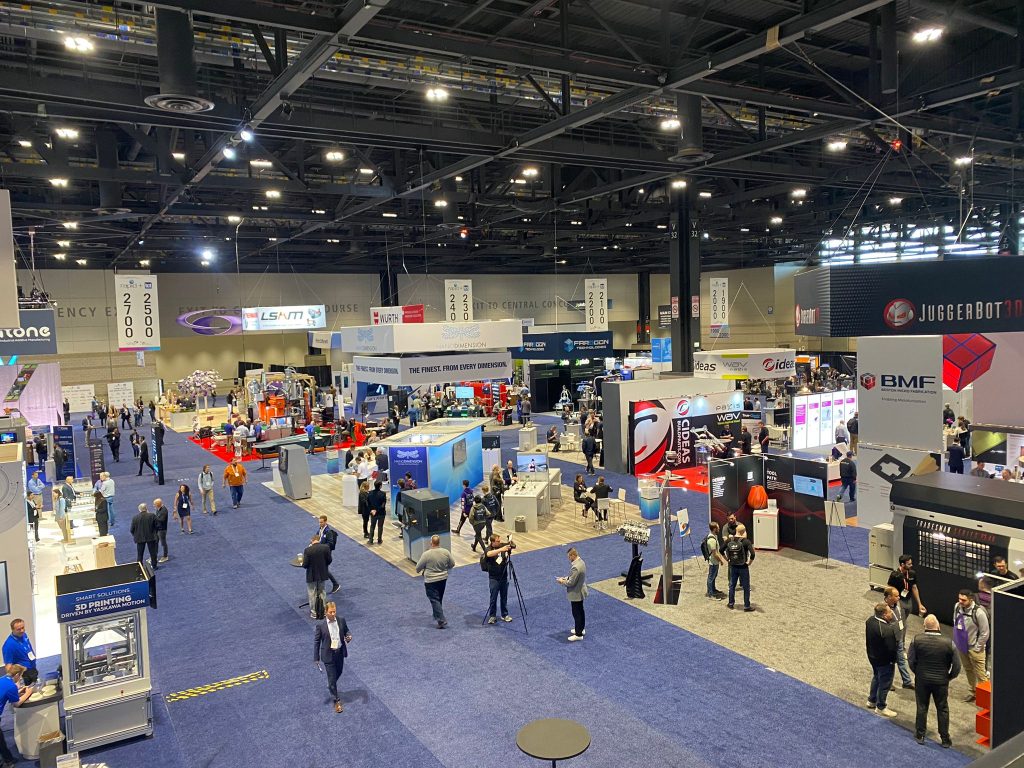
Divergent Technologies expanding DAPS
Keynote speaker Kevin Czinger is the founder of CEO of Czinger Motors, the company behind the $2 million 21C hypercar, and runs Divergent Technology. While the motor side of the business showcases what happens when AM is pushed to the limits, the focus of Divergent Technology is to apply AM to production. Specifically, this is done through the hardware and software mix Divergent calls the Divergent Adaptive Production System or DAPS.
Last year Czinger Motors announced another short-production run vehicle, the Hyper GT.
Divergent has received hefty investment from backers, including Hexagon, who are looking, like many, for AM to scale. A progress report on this activity was duly provided by Czinger. Alongside plans to open two facilities in Europe and build a global network, Divergent is focused on “solutions” rather than technology per se. The first full-scale facility serving automotive customers in scheduled for 2027.
The DAPS system is an example of “true digital manufacturing”, and it seems the company is gaining traction – with customers deploying DAPS for “safety-critical” automotive structures in production.
Czinger highlighted over 20 confirmed programs with “best-in-class” customers – a number complemented by “over 100 million kilograms of pipeline volume”. The value proposition, whether for automotive or defense customers, includes a shorter supply chain, mitigating risk as seen in recent years, and a “higher performing product with functional integration.”
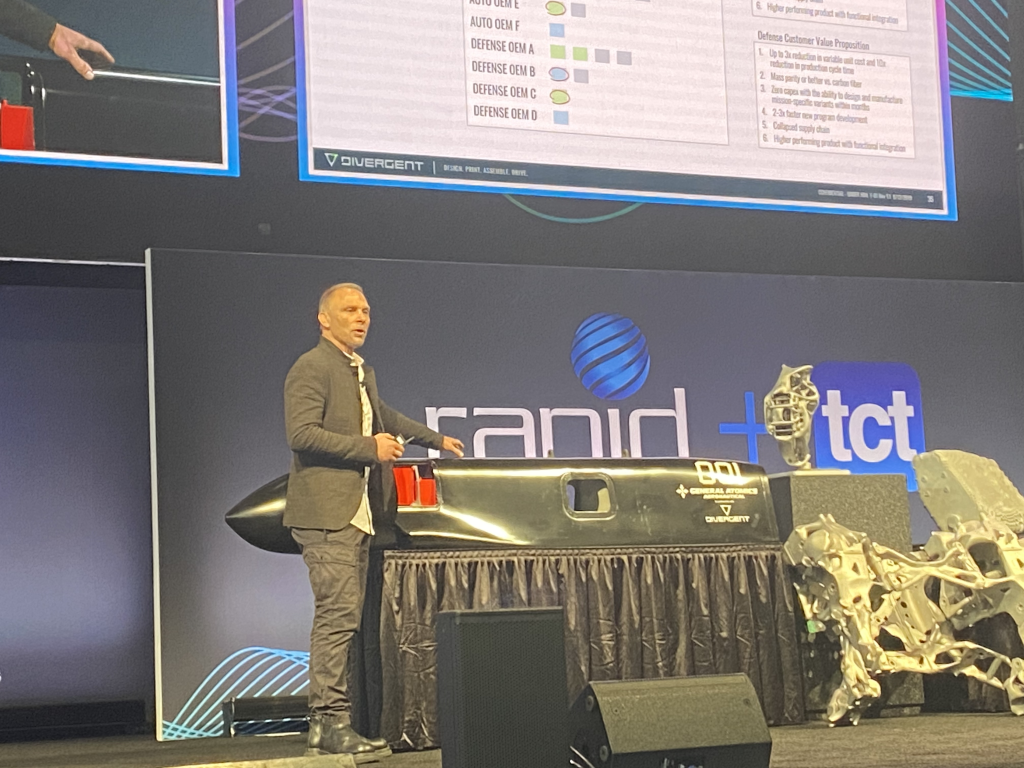
Both Aston Martin Vantage and Mercedes AMG use Divergent’s digital manufacturing tools. “These are vehicles where we are going to be building hundreds and then tens of thousands of vehicles by 2025-2026 using digital manufacturing,” said Czinger.
In defense applications of additive manufacturing, General Atomics has announced a long-term partnership with Divergent Technologies, with the DAPS system reducing the number of parts in a General Atomics drone structure from over 140 to four.
nTop and the new nTop 4 design software
The trifecta of additive manufacturing, machines, materials, and software, when coupled with a designer or engineer’s imagination, can yield products like no other technology platform. And yet, the much-touted maxims such as “geometric freedom” or the less frequently heard “complexity is free” do not materialize by magic.
nTopology, now called nTop, makes software that brings functional lattices and mesmerizing geometric forms to a designer’s fingertips. For RAPID 2023, the New York-based company announced nTop 4. At a press event, nTop CEO Bradley Rothenberg and VP of Product Trever Laughlin ran through the key features of nTop 4 in design, integration, scaling, and adoption.
Rothenberg says nTop will “un-bottleneck design through the core tech.” For example, Field Optimization, a new “flexible optimization network,” is a generative design technology that offers user-friendly workflows. This allows users to generate better-performing parts. Applications for Field Optimization include lightweighting, medical implants, and industrial design.
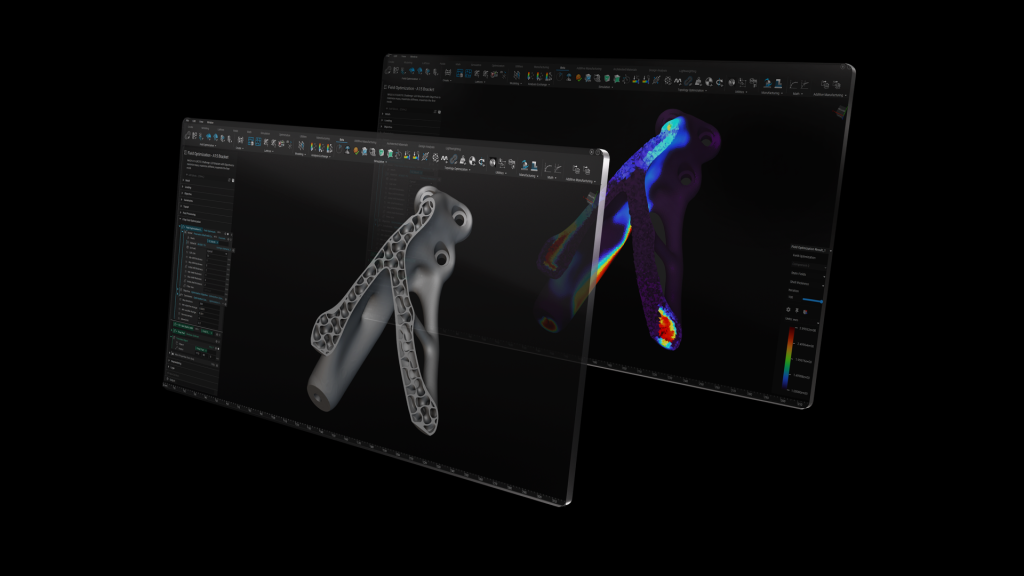
According to nTop, Additive Manufacturing is no longer limited by design or manufacturing but rather the data transfer between them. To promote further integration and reduce bottlenecks, nTop 4 incorporates Implicit Interop. This tool enables easy data transfer between nTop, manufacturing, CAD, and CAE software by reducing file sizes. Indeed, this feature offers up to 99% smaller file sizes and 60% faster loading times compared to meshes, allowing complex designs to be transferred in megabytes as opposed to gigabytes.
nTop also offers a direct Interop plugin for EOSPRINT, which it claims allows compact and accurate files to be generated in seconds. In fact, Siemens Energy purportedly leveraged this software to print Industrial Hex planned to be the largest HEX ever printed, which would take days to process using traditional slicers.
nTop Automate is a feature that seeks to enable the potential for scaling, allowing users to execute nTop workflows through a programmatic environment. With this tool, users can create scripts to automate repetitive tasks, connect nTop with CAD, CAE, or MDO tools to generate design candidates in less time, and access fully automated design generation.
Finally, nTop Accelerate offers a range of one-to-one training services, workshops, and design sprints to help customers of all experience levels develop their additive skills.
Current nTop customers include Ocado, Aerojet Rocketdyne, and Lightforce. Ocado has already leveraged nTop 4 to meet demanding timelines and weight reduction targets for its 600 series warehouse robot.
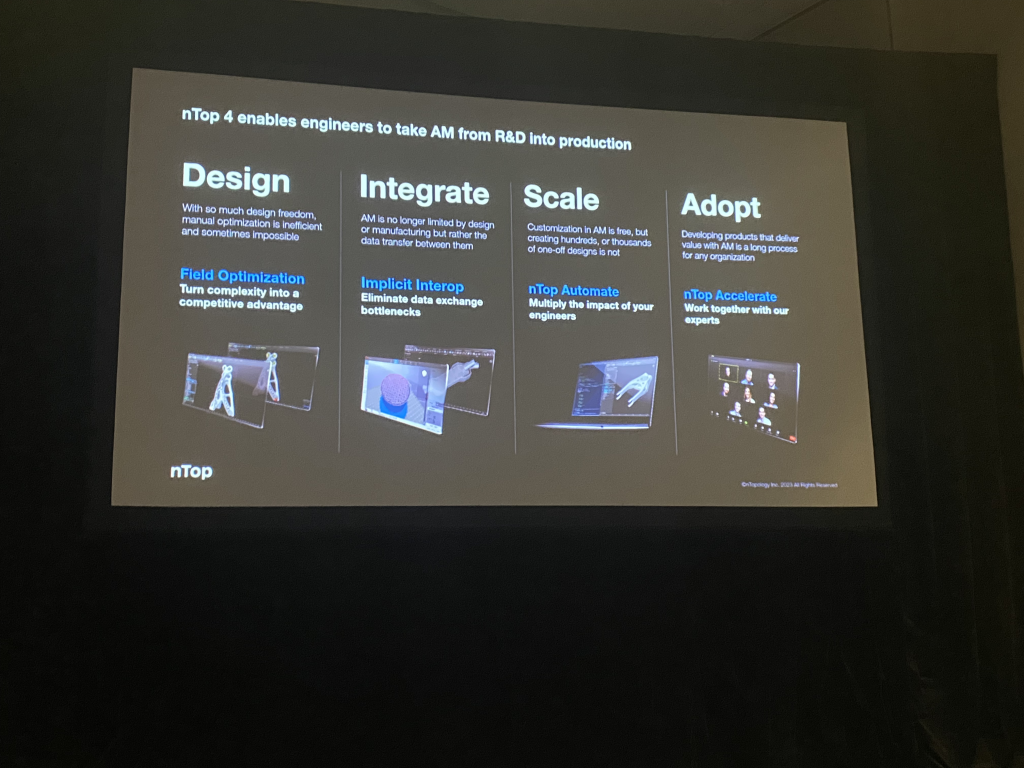
Ulendo achieves significant milestones in first year
As noted in the 2023 3D Printing Industry Executive Survey, existing hardware platforms present ample opportunity for optimization via enhanced software. Vibration compensation software developer Ulendo launched at last year’s RAPID.
Ulendo CEO Brenda Jones, says, “You can double the throughput of 3D printers with our software installed.”
Ulendo software speeds up extrusion 3D printers. Using an accelerometer to record the vibration data of a 3D printer, a calibration map can be created. The software can then anticipate and counteract vibrations, allowing for faster printing.
Initially aimed towards manufacturers of 3D printers, Ulendo’s first customer was Flashforge, who are implementing this software onto three of their printer models. In Q1 2023, Ulendo extended its software to be compatible with printers already in production. This allows for the potential to retrofit 3D printing service bureau’s printer farms, potentially doubling their output.
Ulendo recently received a $1 million grant in federal funding from the National Science Foundation to advance its vibration compensation algorithm.
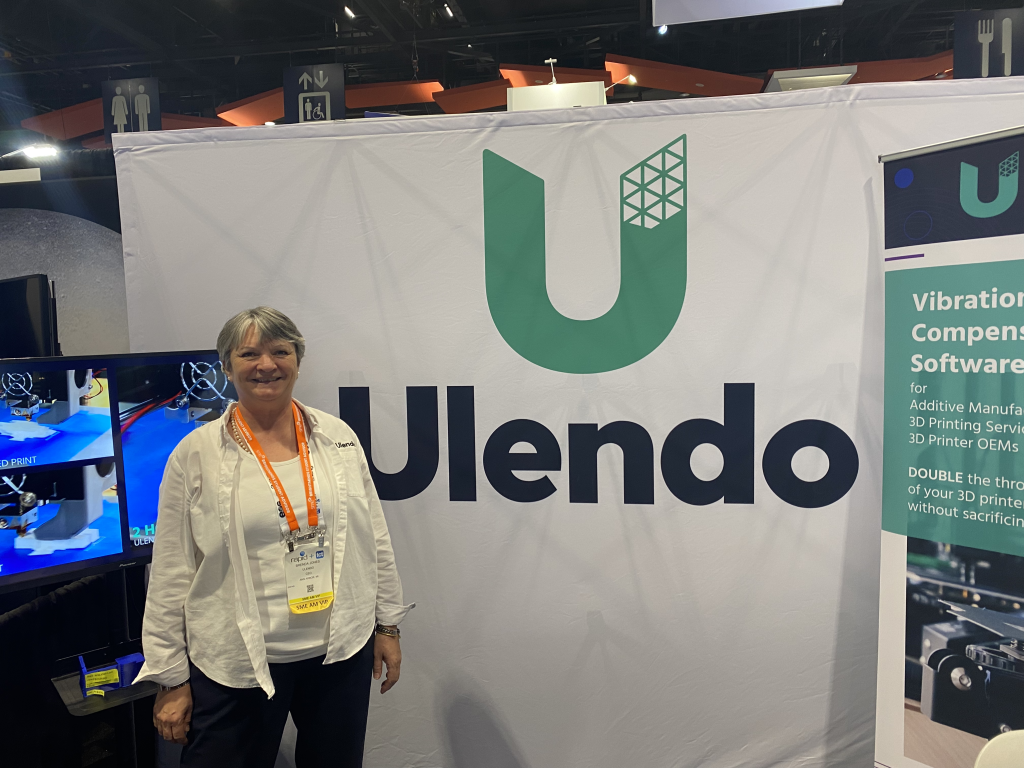
Nexa3D unveils the XiP Pro
What would a 3D printing event be without new 3D printers?
Lewis Simms, Industrial Production MKTG at Nexa3D, gave an introduction to the newly launched XiP Pro desktop resin 3D printer. Following in the footsteps of the well-received Nexa3D XiP, read our XiP review here, the XiP Pro uses Nexa’s patented Lubricant Sublayer Photocuring (LSPc) technology to achieve the combination of speed and precision the Californian company believes is lacking in the offerings of competitors.
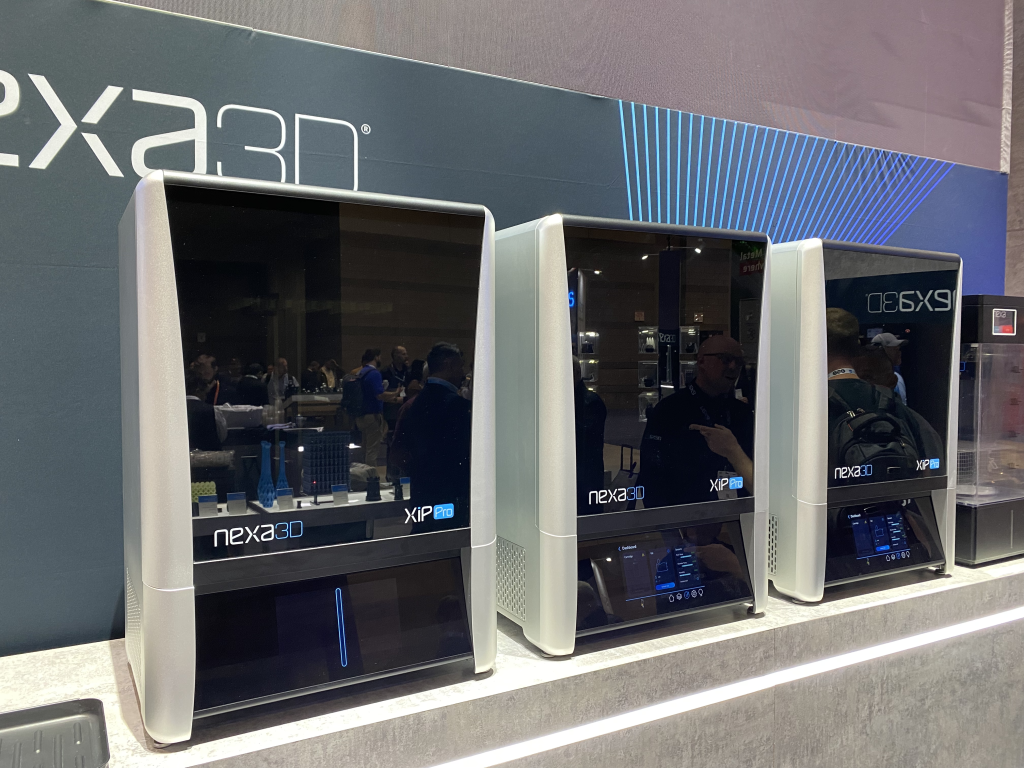
The XiP Pro boasts printing speeds of 24 vertical centimeters per hour and can print its entire 19.5L build volume in under 2 hours. Read more about the XiP Pro system here.
Simms took visitors through features of the XiP Pro, including modularity. For example, the LCD screen is user swappable. “When you’re ready to change it out, unscrew eight bolts, pop it out, pop a new one, and you’re done,” said Simms. The XiP Pro system has a 7K screen, but as technology continues its relentless march of progress, Nexa’s latest 3D printer is prepared to avoid obsolescence, “It’s a matter of changing that LCD screen. It’s an investment that continues to pay dividends long term really,” according to Simms.
At the launch, Nexa said it has undisclosed customers in aerospace and automotive and has already made a sale.

DMG Mori’s new SLM system
Finally, DMG Mori launched its new Lasertec 30 SLM 3D printer. The new metal additive manufacturing system sported a dazzle camouflage wrap to obscure its specific design and shape. It is the company’s first powder bed system to be designed, developed, and manufactured within the US.
Tailored towards aerospace and medical applications, the DMG Mori Lasertec 30 SLM offers a 1,000-watt programmable laser with 80-240 μm spot size and a substantial build volume of 300x300x300mm. Moreover, the machine also boasts contactless recoating, optimized gas flow for increased process stability, and a long filter life of up to 1500 hours.
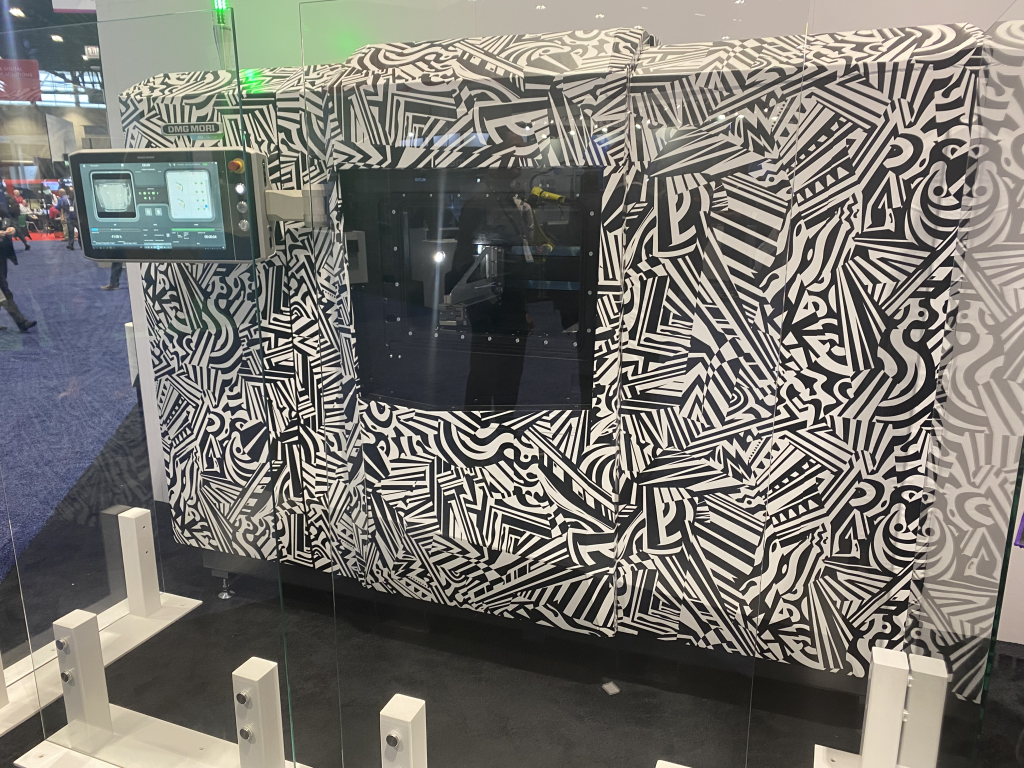
DMG Mori has 9 sub-regions and 12 technology centers within the US, a production plant, USA headquarters, and Academy Training Center, and a spare parts center. Moreover, the company has over 16,000 customers within the US alone, having installed over 63,000 machines and employing over 800 people. Additionally, DMG Mori also has a global reach, with Additive Manufacturing Excellence Centers in the US, Germany and Japan. These centers provide application support, service support, DfAM and metallurgical support, and process and turnkey development to customers worldwide.
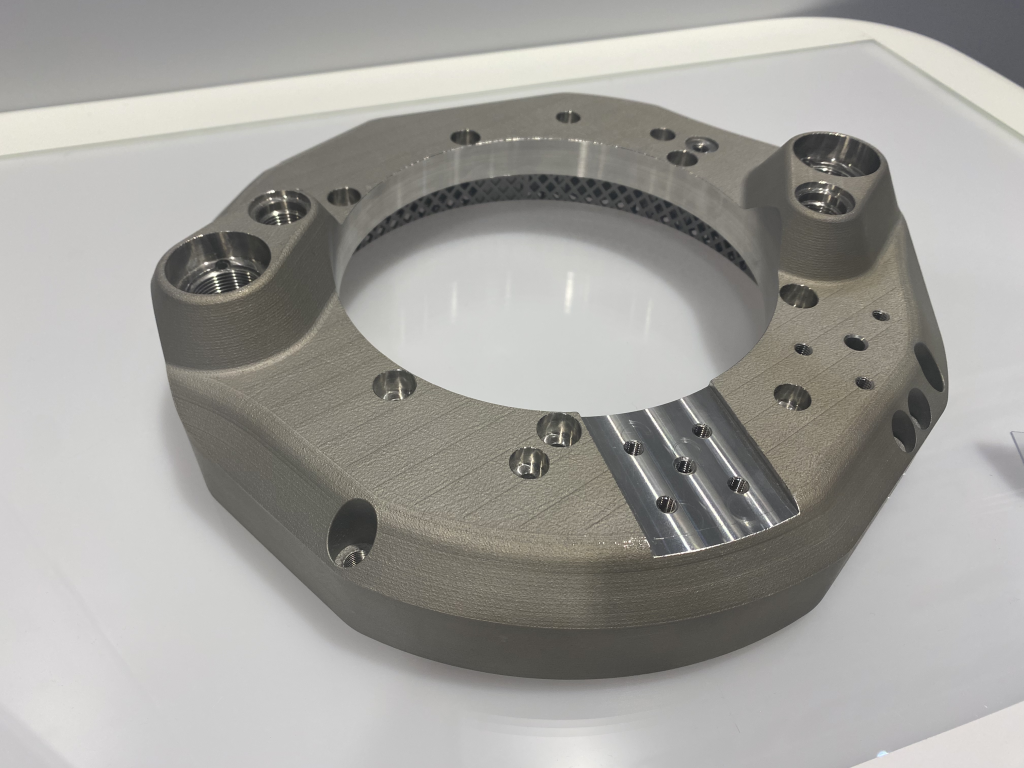
In 2018, also at McCormick Place, but during IMTS, DMG Mori President Dr. Masahiko Mori said that the 2020s will be the decade of Additive Manufacturing. Dr. Mori said that, by 2025, if a machine shop has 10 machine tools operating with spindles, they should also have at least 1 or 2 industrial additive systems – leading to 20% of production made using AM by 2030. As such, Mori affirmed that DMG Mori is, “spending thousands of millions of Euros on this [AM] type of technology,”
We spoke to DMG Mori’s General Manager, Nils Niemayer, and posed this quote to him for an update on these goals. Whilst not directly addressing the statements made by Mori, or the amount being spent on this technology, Niemayer did outline the company’s ongoing scaling and expansion efforts. “DMG Mori is continuously investing in additive manufacturing. So the decision to launch now in development and manufacturing in the USA, is manifesting that,” said Nils. “Not only have we invested in our Additive Manufacturing Excellence centers around the globe, but we’ve also continuously increased our capabilities on the development and on the manufacturing side, to meet the demand in the market, that we expect in the future.”
Nils also noted that efforts to expand DMG Mori’s operations in America have been motivated by global supply chain challenges and re-shoring efforts within the US. “The decision to make the machines here in the US is a response to supply chain concerns of the last year,” claimed Nils. “Not only do we design and manufacture the majority of the products here in the US, we also source the vast majority of the parts from bolts and screws, to sheet metal, to core components like the laser. All of those components are being either made ourselves or sourced here locally in the US, and that is certainly a response to the request for a more domestic supply chain in the US.”
Want more news from Chicago?


